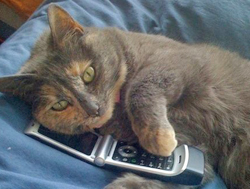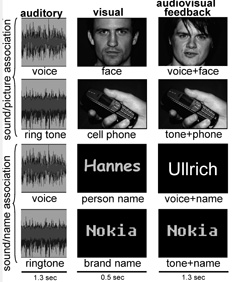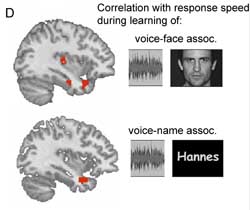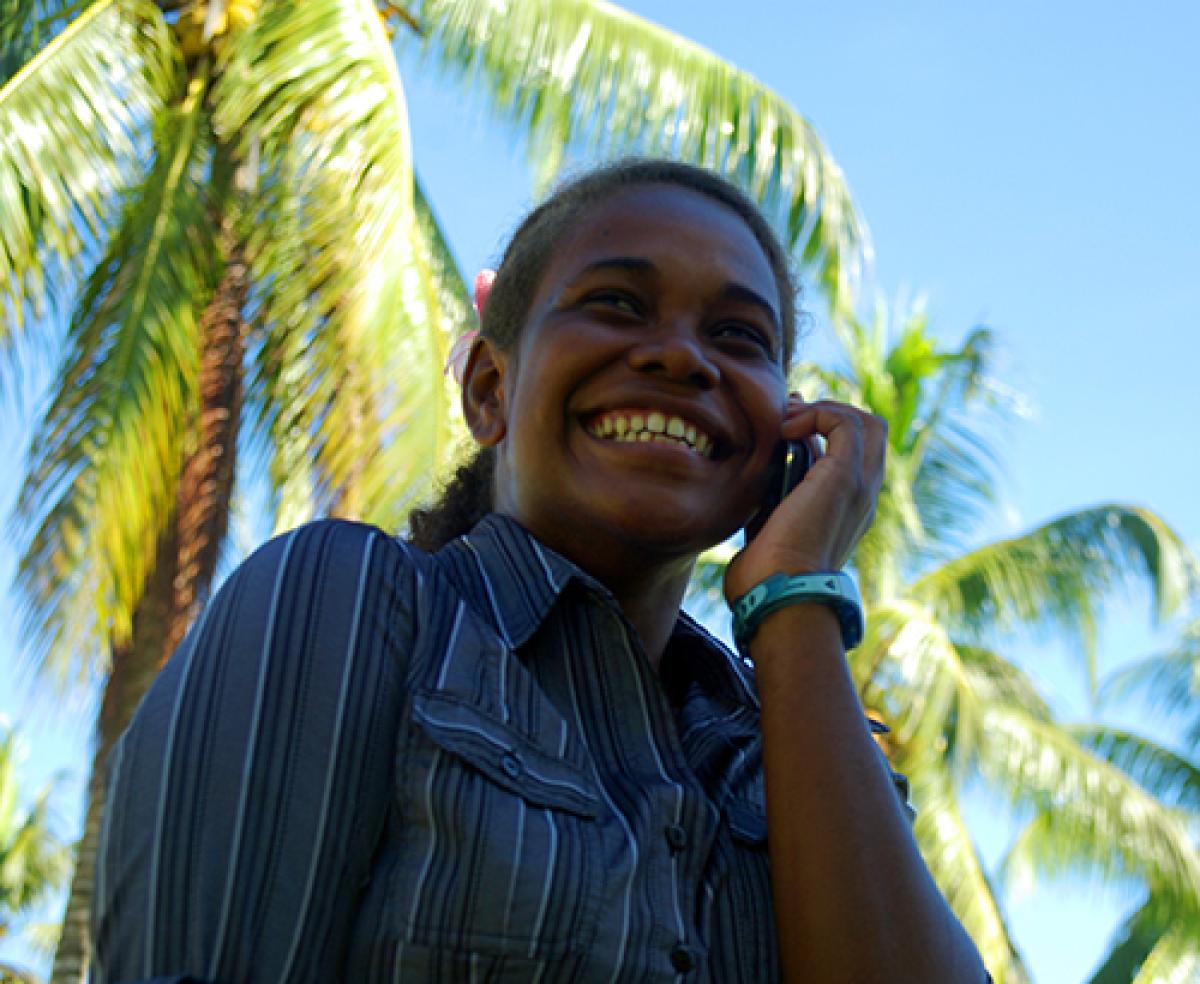
Hey, I Know You!
What’s in the Story?

You have probably seen toddlers talking to their moms on the phone before. Even though they can't see their moms, little kids' faces light up as they recognize the voice of someone important. Usually toddlers are very “hands-on,” and need to touch and see things in the real world to understand them. So how do they recognize mom's voice without actually seeing her face?
Scientists are curious how this happens, not just for little kids but for everyone. How do we know who we are talking to on the phone when we can only hear a voice? In the PLOS Biology article, “Implicit Multisensory Associations Influence Voice Recognition,” scientists examine how our brains connect a person’s face and that person's voice.
Brain Basics

As you probably know, the brain is a complex organ that controls our entire body. But for now, let's focus on the parts of the brain that help us recognize people’s voices and faces.
The part that tells us about a person’s voice is the auditory area, and the part that tells us about a person’s face is the visual area. These parts of the brain work together to identify a person. When two senses work together like this, scientists call it a “multiple sensory modality,” which basically means that the two (multiple) senses are so connected that they act like one sense.
What makes the connection between sight and hearing so strong is the fact that both senses give similar information about a person. For example, a girl’s voice sounds different than a boy’s voice and their faces have different features as well. Using this idea in our example of the boy on the phone, when he hears his mom’s voice on the phone, the auditory part of his brain tells the visual part of his brain to turn on too, so the child can both “see” and hear mom.
Are You My Mommy?

To see how a little boy could recognize his mom’s voice over the phone, scientists conducted an experiment. They used a special technology called functional magnetic resonance imaging to see what parts of the brain were active during the study. They then collected two groups of people for the experiment. One group was exposed to pairs of voices and faces, similar to how the little boy on the telephone recognized his mom’s voice and face together. The other group was exposed to pairs of voices and names.
After each group was familiar with their pairs, scientists mixed up the order. For the first group they placed different faces and voices together, and for the second group they mixed up the names and voices.

Remembering what they first heard and saw, each group had to take the jumbled results and try to match them back together. While they did this, scientists were closely observing brain activity. Individuals from both groups showed an increase in brain activity when matching the pairs back together. But the group members who were exposed to both faces and voices were much quicker to correctly match everything. The voice/face volunteers were also the only ones who showed an increase in brain activity in the facial recognition area of the brain. This shows that sight and hearing are very strongly connected.
Applying this idea to our first example, when the child hears his mom’s voice, two parts of the brain are active. The little boy’s visual area of the brain lets him “see” her face, and the auditory area of the brain lets him hear her voice. The connection our brains make between people’s voices and faces develop when we are very young, and is a strong communication skill that grows as we do.
Additional images via Wikimedia Commons. Woman on cellphone by Dgultekin.
Bibliographic details:
- Article: Hey, I Know You!
- Author(s): Melissa Brisbin
- Publisher: Arizona State University School of Life Sciences Ask A Biologist
- Site name: ASU - Ask A Biologist
- Date published:
- Date accessed:
- Link: https://askabiologist.asu.edu/plosable/hey-i-know-you
APA Style
Melissa Brisbin. (). Hey, I Know You!. ASU - Ask A Biologist. Retrieved from https://askabiologist.asu.edu/plosable/hey-i-know-you
Chicago Manual of Style
Melissa Brisbin. "Hey, I Know You!". ASU - Ask A Biologist. . https://askabiologist.asu.edu/plosable/hey-i-know-you
Melissa Brisbin. "Hey, I Know You!". ASU - Ask A Biologist. . ASU - Ask A Biologist, Web. https://askabiologist.asu.edu/plosable/hey-i-know-you
MLA 2017 Style

Be Part of
Ask A Biologist
By volunteering, or simply sending us feedback on the site. Scientists, teachers, writers, illustrators, and translators are all important to the program. If you are interested in helping with the website we have a Volunteers page to get the process started.
